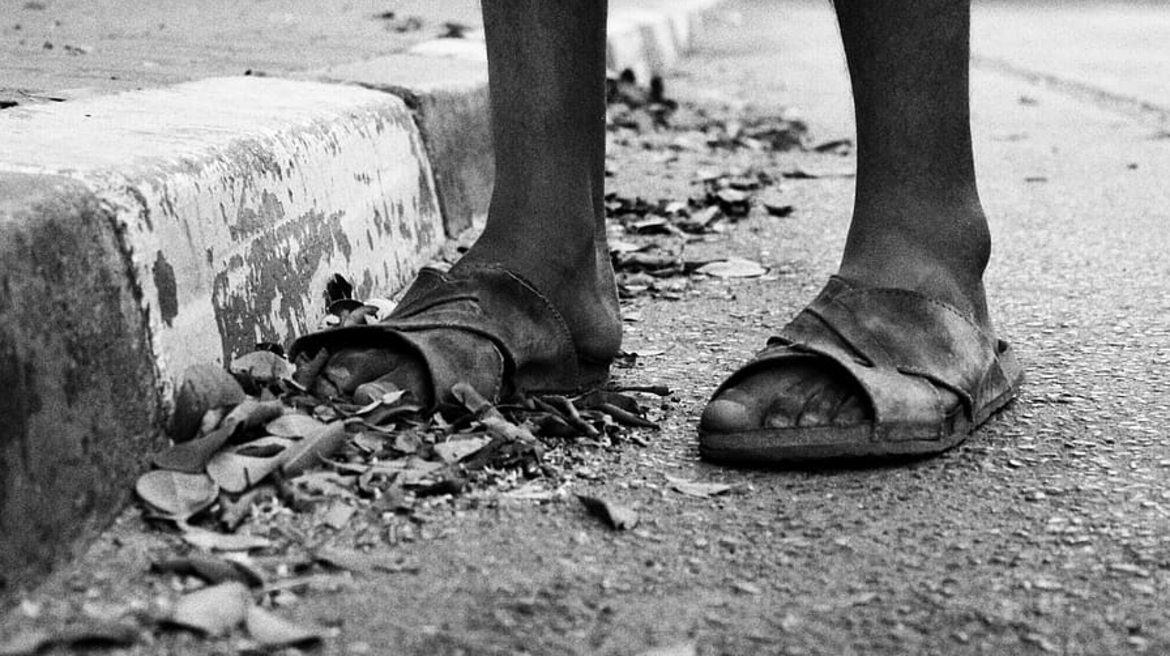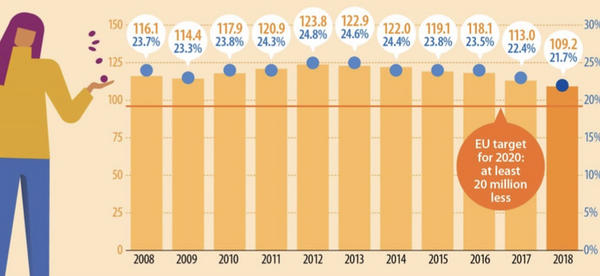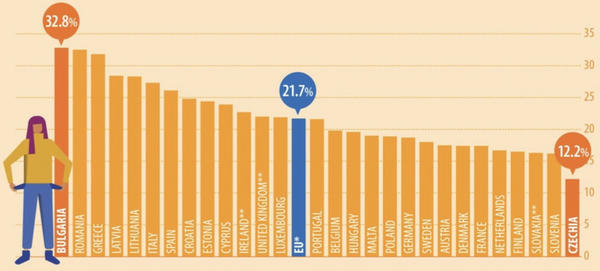More than 100 million people in the EU are poor
Poverty in the EU is falling, but not at the expected rate. One in five Europeans remain at risk of poverty or social exclusion. While the situation in Hungary is better than the EU average, it fares the worst among the Visegrad countries.

Photo: Pxfuel , Creative Commons Zero - CC0
More than 100 million people in the EU are poor
Poverty in the EU is falling, but not at the expected rate. One in five Europeans remain at risk of poverty or social exclusion. While the situation in Hungary is better than the EU average, it fares the worst among the Visegrad countries.
Photo: Pxfuel , Creative Commons Zero – CC0
109.2 million people are still living in poverty or at risk of social exclusion in EU member states, as shown by a survey published by Eurostat, the EU’s statistical office, on the International Day for the Eradication of Poverty (17 October).
This figure represents 21.7 percent of the population. While poverty may be falling, it’s falling more slowly than desired. Ten years ago the figure was two percent higher, while two years ago it was 0.7 percent higher. According to the accepted methodology, this category includes those for whom at least one of the following three conditions is true: the risk of poverty after required payments, after so-called social transfers (income poverty), severe material deprivation, or living in households with very low work intensity.
Between 2008 and 2018, the year when the greatest proportion of people faced poverty was 2012 (123.8 million), although the 2008 data is used as a baseline. In 2012, 116.1 million people were affected by this phenomenon (Croatia was not yet a member of the EU). A target was set to reduce the number of people facing poverty by 20 million by 2020. Needless to say, the target was missed.
We lost the regional competition
In 2018, the risk of poverty or social exclusion was highest in Bulgaria and lowest in the Czech Republic. Last year, more than a quarter of the population was at risk in seven Member States: Bulgaria (32.8%), Romania (32.5%), Greece (31.8%), Latvia (28.4%), Lithuania (28.3%) Italy (27.3%) and Spain (26.1%).
At the other end of the scale, with the lowest proportions of people at risk, are the Czech Republic (12.2%), Slovenia (16.2%), Slovakia (16.3%, 2017 data), Finland (16.5 %), the Netherlands (16.7%), Denmark and France (both 17.4%), and Austria (17.5%).
The 2018 data shows that the number of people at risk of poverty or social exclusion has increased in nine Member States since 2008: Luxembourg (from 15.5% in 2008 to 21.9% in 2018), Greece (+ 3.7%), Estonia (+2.6 percent), Spain (+ 2.3 percent), Italy and the Netherlands (both + 1.8 percent), Sweden (+1.3 percent), Denmark (+1.1 percent) and Cyprus (+0.6 percent).
The biggest drop was in Bulgaria (from 44.8% to 32.8%, falling by 12 percentage points), followed closely by Romania (-11.7%) and Poland (-11.6%), then Hungary (-8.6% percent) and Latvia (-5.8 percent).
People at risk of poverty or social exclusion in the EU Member States 2008-2018 (in millions of people and % of total population, 2018 data). Source: Eurostat
Comparing Hungary to the other Visegrad countries, we have the highest proportion of people facing poverty or social exclusion. In concrete terms, last year in Hungary there were 1,887,000 such people. Ten years ago, the situation was even worse, with 2,794,000 Hungarians falling into this category. However, our regional position fell: in 2008, the Poles were still behind us; ten years later, we were overtaken, while we were far behind the Czechs and the Slovaks.
One in six Europeans is at risk of income poverty
In 2018, 16.9 percent of the EU population had disposable income below the national poverty line. It was the same in 2017, but 0.2 percent lower in 2008.
In the EU member states, more than one in five is at risk of income poverty in Romania (23.5%), Latvia (23.3%), Lithuania (22.9%), Bulgaria (22%), Estonia (21.9%) , Spain (21.5 percent) and Italy (20.3 percent).
In contrast, the lowest rates were observed in the Czech Republic (9.6 percent), Finland (12%), Slovakia (12.4%, 2017 data), Denmark (12.7%), Hungary (12.8%), the Netherlands and Slovenia (both 13.3%), and France (13.4%). Compared with 2008, the proportion of people at risk of income poverty grew in 16 and fell in 8 member states.
Serious deprivation: 5.8 percent
In 2018, 5.8 percent of the EU population suffered from severe material deprivation, meaning that they had constrained living conditions due to lack of money. For example, they may be unable to pay bills, provide sufficient heating, or afford a one-week vacation away from home.
Compared to both 2017 (6.6 percent) and 2008 (8.5 percent) data, this group has shrunk. In 2018, the proportion of people experiencing severe material deprivation varied significantly between Member States: 20.9% in Bulgaria, 16.8% in Romania and 16.7% in Greece, but less than 4% in Luxembourg (1.3%), Sweden (1.6%), the Netherlands (2.4%), the Czech Republic, Austria and Finland (all 2.8%), Malta (3%), Germany (3.1%), Denmark (3.4%) , Slovenia (3.7%) and Estonia (3.8%).
People at risk of poverty and social exclusion in the Member States (% of total population, 2018 data) Source: Eurostat
Brussels’ redefined plans
In the new European Commission, Luxembourg Commissioner for Jobs and Social Rights Nicolas Schmit, is responsible for such issues. In Schmit’s so-called mission letter from the President of the Commission, Ursula von der Leyen, the word “poverty” is used once, when von der Leyen writes of developing “a European Child Guarantee as a tool to fight poverty and ensure children have access to basic services”.
Further plans include the right to a fair minimum wage, a European Unemployment Benefit Reinsurance Scheme, and a European Action Plan for Social Economy to enhance social innovation. As Commissioner-designate, Schmit told Euronews that “the numbers of jobs is not so much important, it’s the quality of jobs, which is decisive.”


